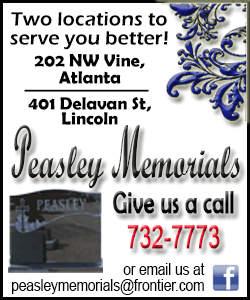|
 In a hypothetical model, if each state had up to 20 hospitals
providing the best possible care for people having strokes - which
is not the current reality - more than a third of Americans would
still be more than a 60-minute ambulance ride away from one of those
medical centers. In a hypothetical model, if each state had up to 20 hospitals
providing the best possible care for people having strokes - which
is not the current reality - more than a third of Americans would
still be more than a 60-minute ambulance ride away from one of those
medical centers.
Using a helicopter or other air transportation would improve that
number but still leave many Americans more than an hour away from
the nearest center, the study found.
“There are effective treatments for stroke, but they are time
sensitive,” said lead author Dr. Michael Mullen. “The faster a
patient is treated, the more likely they are to be eligible for
acute stroke therapies and the more effective those therapies will
be.”
Timely transport to a qualified medical center is especially
important with recent evidence supporting a new method to clear
stroke-causing blood clots from the brain, said Mullen, a
neurologist from the Perelman School of Medicine at the University
of Pennsylvania in Philadelphia, in an email to Reuters Health.

That procedure, he said, “is resource intensive and will not be
available in all hospitals.”
Starting in 2003, medical centers could be certified as primary
stroke centers, making them go-to hospitals for stroke patients.
Starting in 2012, they could also be certified as comprehensive
stroke centers to show they deliver the most advanced stroke care.
For the new study, the researchers used a computer model to show
which primary stroke centers should be upgraded to comprehensive
centers to optimize access for as many Americans as possible.
By the end of 2010, there were 811 primary stroke centers that were
potential candidates for upgrade, the researchers report in the
journal Neurology.
Each state had between 0 and 96 primary stroke centers, and only
about 66 percent of Americans were within a one-hour ride to one of
those centers, they found.
Under what the researchers consider a best-case scenario, converting
up to 20 of those hospitals in strategic locations in each state
would give about 63 percent of Americans access to a comprehensive
stroke center within an hour drive.
By adding air transportation as an option to those centers, 86
percent of Americans would be an hour away from one of the
comprehensive stroke centers.
Even so, access would vary considerably by state. Everyone in most
Northeastern states would have access to a comprehensive stroke
center by ground or air within 60 minutes, compared to only about 15
percent of people in Wyoming.
[to top of second column] |

“I think that the primary take-away is that even under optimal
circumstances Comprehensive Stroke Centers may not be rapidly
accessible to everyone in the population and there will likely be
significant geographic variability in access to these centers,”
Mullen said.
The researchers caution that comprehensive stroke centers are new
and still need to show that they deliver better care than
traditional hospitals.
One neurologist not involved with the study said the current
approach to stroke care has elements in common with approaches used
in trauma care and for heart attacks.
For heart attacks, Dr. David Miller said, many hospitals can provide
initial care and then transfer patients to other hospitals - but
trauma patients are usually taken directly to regional centers that
provide very advanced care.
“Stroke is in-between,” said Miller, director of the comprehensive
stroke center at the Mayo Clinic in Jacksonville, Florida.
As of now, he said, the most important thing is for people
experiencing the symptoms of stroke to get medical attention and
notify 911.
“If it’s a small emergency room that’s a block away, you get them
there,” Miller said.
The American Stroke Association recommends FAST to identify the
symptoms of a stroke: Face drooping, Arm weakness, Speech
difficulty, Time to call 911.

SOURCE: http://bit.ly/17Wc79e and http://bit.ly/17Wc9Ow Neurology,
online March 4, 2015.
[© 2015 Thomson Reuters. All rights
reserved.] Copyright 2015 Reuters. All rights reserved. This material may not be published,
broadcast, rewritten or redistributed. |